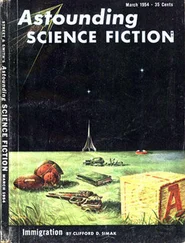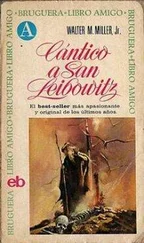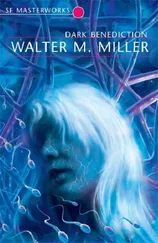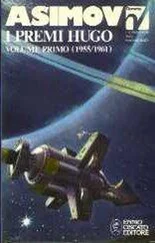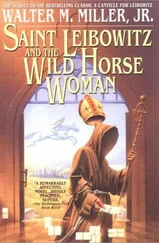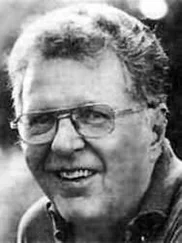He thought of replacing the pilgrim’s stone to cork the hole as before, but the adjacent stones had shifted slightly so that it no longer fit its previous place in the puzzle. Besides, the gap in the highest tier of his shelter wall remained unfilled, and the pilgrim was right: the stone’s size and shape suggested a probable fit. After only brief misgivings, he hoisted the rock and staggered back to his burrow.
The stone slipped neatly into place. He tested the new wedge with a kick; the tier held fast, even though the jolt caused a minor collapse a few feet away. The pilgrim’s marks, though blurred by his handling of the stone, were still dear enough to be copied. Brother Francis carefully redrew them on another rock, using a charred stick as a stylus. When Prior Cheroki made his Sabbath tour of the hermitages, perhaps the priest would be able to say whether the marks had meaning, either as charm or curse. To fear the pagan cabals was forbidden, but the novice was curious at least to learn what sign would be overhanging his sleeping pit, in view of the weight of the masonry on which the sign was written.
His labors continued through the heat of the afternoon. A corner of his mind kept reminding him of the hole — the interesting, and yet fearsome, little hole — and the way the rattle of gravel had caused faint echoes from somewhere below ground. He knew that the ruins all about him here were very old. He knew also, from tradition that the ruins had been gradually eroded into these anomalous heaps of stone by generations of monks and occasional strangers, men seeking a load of stone or looking for the bits of rusty steel which could be found by shattering the larger sections of columns and slabs to extract the ancient strips of that metal, mysteriously planted in the rocks by men of an age almost forgotten to the world. This human erosion had all but obliterated the resemblance to buildings, which tradition ascribed to the ruins in an earlier period, although the abbey’s present master-builder still took pride in his ability to sense and to point out the vestige of a floor plan here and there. And there was still metal to be found, if anyone cared to break enough rock to find it.
The abbey itself had been built of these stones. That several centuries of stonemasons might have left anything of interest still to be discovered in the ruins, Francis regarded as improbable fancy. And yet, he had never heard anyone mention buildings with basements or underground rooms. The master-builder, he recalled at last, had been quite specific in saying that the buildings at this site had had aspects of hasty construction, lacked deep foundations, and had rested for the most part on flat surface slabs.
With his shelter approaching completion, Brother Francis ventured back to the hole and stood looking down at it; he was unable to put off the desert-dweller’s conviction that wherever a place exists to hide from the sun, something is already hiding in it. Even if the hole was now uninhabited, something would certainly slither into it before tomorrow’s dawn. On the other hand, if something already lived in the hole, Francis thought it safer to make its acquaintance by day than by night. There seemed to be no tracks in the vicinity except his own, the pilgrim’s, and the tracks of the wolves.
Making a quick decision, he began clearing rubble and sand away from the hole. After half an hour of this, the hole was no larger, but his conviction that it opened into a subterranean pit had become a certainty. Two small boulders, half buried, and adjoining the opening, were obviously jammed together by the force of too much mass crowding the mouth of a shaft; they seemed caught in a bottleneck.
When he pried one stone toward the right, its neighbor rolled left, until no further motion was possible. The reverse effect occurred when he pried in the opposing direction, but he continued to jostle at the rock-jam.
His lever spontaneously leaped from his grasp, delivered a glancing blow to the side of his head, and disappeared in a sudden cave-in. The sharp blow sent him reeling. A flying stone from the rockslide struck him in the back and he fell gasping, uncertain whether or not he was falling into the pit until the instant his belly hit solid ground and he hugged it. The roar of the rockfall was deafening but brief.
Blinded by dust, Francis lay gasping for breath and wondering whether he dared to move, so sharp was the pain in his back, Having recovered a little breath, he managed to get one hand inside his habit and groped for the place between his shoulders where a few crushed bones might be. The place felt rough, and it stung. His fingers came away damp and red. He moved, but groaned and lay quietly again.
There was a soft beating of wings. Brother Francis glanced up in time to see the buzzard preparing to alight on a rubble heap a few yards away. The bird took wing again at once, but Francis imagined that it had eyed him with a sort of motherly concern in the manner of a worried hen. He rolled over quickly. A whole black heavenly host of them had gathered, and they circled at a curiously low altitude. Just skimming the mounds. They soared higher when he moved. Suddenly ignoring the possibility of chipped vertebrae or a crushed rib, the novice climbed shakily to his feet. Disappointed, the black sky-horde rode back to altitude on their invisible elevators of hot air, then disbanded and dispersed toward their remoter aerial vigils. Dark alternatives to the Paraclete whose coming he awaited, the birds seemed eager at times to descend in place of the Dove; their sporadic interest had been unnerving him of late, and he promptly decided, after some experimental shrugging, that the sharp rock had done no more than bruise and scrape
A dust column which had plumed up from the site of the cave-in was tapering away on the breeze. He hoped someone would see it from the abbey’s watchtowers and come to investigate. At his feet, a square opening yawned in the earth, where one flank of the mound had collapsed into the pit below. Stairs led downward, but only the top steps remained unburied by the avalanche which had paused for six centuries in mid-fall to await the assistance of Brother Francis before completing its roaring descent.
On one wall of the stair well a half-buried sign remained legible. Mustering his modest command of pre-Deluge English, he whispered the words haltingly:
FALLOUT SURVIVAL SHELTER
Maximum Occupancy: 15
Provision limitations, single occupant: 180 days; divide by actual number of occupants. Upon entering shelter, see that First Hatch is securely locked and sealed, that the intruder shields are electrified to repel contaminated persons attempting entry, that the warning lights are ON outside the enclosure…
The rest was buried, but the first word was enough for Francis. He had never seen a “Fallout,” and he hoped he’d never see one. A consistent description of the monster had not survived, but Francis had heard the legends. He crossed himself and backed away from the hole. Tradition told that the Beatus Leibowitz himself had encountered a Fallout, and had been possessed by it for many months before the exorcism which accompanied his Baptism drove the fiend away.
Brother Francis visualized a Fallout as half-salamander, because, according to tradition, the thing was born in the Flame Deluge, and as half-incubus who despoiled virgins in their sleep, for, were not the monsters of the world still called “children of the Fallout”? That the demon was capable of inflicting all the woes which descended upon Job was recorded fact, if not an article of creed.
The novice stared at the sign in dismay. Its meaning was plain enough. He had unwittingly broken into the abode (deserted, he prayed) of not just one, but fifteen of the dreadful beings! He groped for his phial of holy water.
Читать дальше

